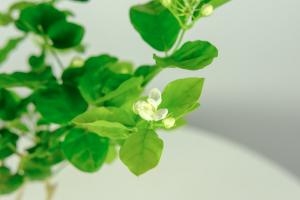Can I propagate a rubber tree plant?
Yes, you absolutely can propagate a rubber tree plant! Propagation is the process of creating new plants from an existing one. This can be done through various methods, such as rooting a cutting or dividing the plant.
What is a rubber tree plant?
A rubber tree plant, also known as a Ficus elastica, is a popular houseplant known for its large, glossy leaves and ability to thrive in low light conditions. It is native to Southeast Asia and is often grown as a decorative tree in gardens and as a plant for indoor spaces.
What are the benefits of propagating a rubber tree plant?
Propagating a rubber tree plant has several benefits. Firstly, it allows you to create new plants and expand your collection without having to purchase them. Secondly, it is an easy and cost-effective way to propagate a plant that has sentimental meaning to you, perhaps one that was gifted to you by a loved one or has been in your family for generations.
How to propagate a rubber tree plant?
There are several methods of propagating a rubber tree plant, including rooting a cutting, air layering, and dividing the plant.
Rooting a cutting:
Rooting a cutting involves taking a stem cutting and encouraging it to grow roots. To do this, choose a healthy branch with several leaves and make a clean cut just below a node. Remove any leaves from the lower part of the stem and place the cutting in a glass of water or a pot filled with moist soil. Keep the soil consistently moist and in a warm, well-lit area. After a few weeks, the cutting should start to develop roots and can be transplanted into a new pot.
Air layering:
Air layering is a method of propagation that involves creating a wound on the plant stem and encouraging it to grow roots. To do this, make a small cut about a third of the way through the stem and wrap it with damp sphagnum moss. Cover the moss with plastic wrap to keep it moist, and secure it in place with string or twist ties. After several weeks, roots should start to grow into the moss. Once there are enough roots, cut the stem below the roots and transplant the new plant.
Dividing the plant:
Dividing the plant involves separating the roots and shoots of a mature rubber tree plant and creating two or more new plants. To do this, carefully remove the plant from its pot and gently tease apart the roots and shoots. Make sure to keep each division intact, with a healthy root system and several leaves. Place each new plant in its own pot with fresh soil and water thoroughly.
What to do after propagating a rubber tree plant?
Once you have successfully propagated a rubber tree plant, there are several steps you can take to ensure its continued growth and health. Firstly, make sure to keep the new plant in a warm, well-lit area with consistent moisture. Secondly, consider using a fertilizer specifically designed for rubber tree plants to encourage healthy growth. Finally, be patient - it may take several months or even a year for your plant to fully establish itself and start growing at its full potential.
In conclusion
Propagating a rubber tree plant is a fun and rewarding process that can help you expand your plant collection and create new plants with sentimental meaning. By following the right methods and taking good care of your new plants, you can have a beautiful and thriving collection of rubber tree plants in no time.

 how many times do yo...
how many times do yo... how many planted tre...
how many planted tre... how many pine trees ...
how many pine trees ... how many pecan trees...
how many pecan trees... how many plants comp...
how many plants comp... how many plants can ...
how many plants can ... how many plants and ...
how many plants and ... how many pepper plan...
how many pepper plan...































